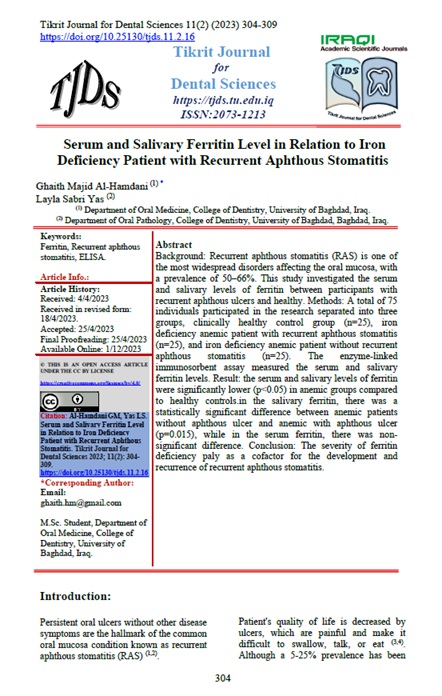Serum and Salivary Ferritin Level in Relation to Iron Deficiency Patient with Recurrent Aphthous Stomatitis
Ghaith Majid Al-Hamdani
Department of Oral Medicine, College of Dentistry, University of Baghdad, Iraq.
Layla Sabri Yas
Department of Oral Pathology, College of Dentistry, University of Baghdad, Baghdad, Iraq.
DOI: https://doi.org/10.25130/tjds.11.2.16
Keywords: Ferritin, Recurrent aphthous stomatitis, ELISA
Abstract
Background: Rec urrent aphthous stomatitis (RAS) is one of the most widespread disorders affecting the oral mucosa, with a prevalence of 50–66%. This study investigated the serum and salivary levels of ferritin between participants with recurrent aphthous ulcers and healthy. Methods: A total of 75 individuals participated in the research separated into three groups, clinically healthy control group (n=25), iron deficiency anemi c patient with recurrent aphthous stomatitis (n=25), and iron deficiency anemic patient without recurrent aphthous stomatitis (n=25). The enzyme-linked immunosorbent assay measured the serum and salivary ferritin levels. Result: the serum and salivary levels of ferritin were significantly lower (p<0.05) in anemic groups compared to healthy controls.in the salivary ferritin, there was a statistically significant difference between anemic patients without aphthous ulcer and anemic with aphthous ulcer (p=0.015), while in the serum ferritin, there was non-significant difference. Conclusion: The severity of ferritin deficiency paly as a cofactor for the development and recurrence of recurrent aphthous stomatitis.




